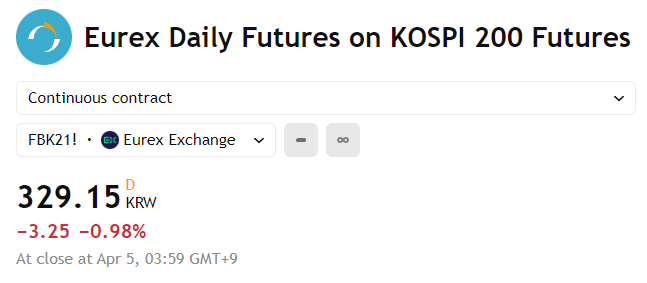KOSPI overnight futures have become an essential tool for investors seeking to navigate the Korean market in response to global financial developments. As Korea’s main equity index, the KOSPI reflects the country’s economic performance, and its futures contracts offer valuable insights even when the Seoul stock exchange is closed. The overnight session, facilitated through a partnership between the Korea Exchange (KRX) and the Chicago Mercantile Exchange (CME), allows real-time reflection of international events on Korean market expectations.
What Are KOSPI Overnight Futures
KOSPI overnight futures are derivatives that track the performance of the KOSPI 200 index during hours when the Korean market is officially closed. These contracts are traded on the CME in USD, making them accessible to global investors. The trading session typically runs from 6 PM to 5 AM Korea Standard Time, covering most of the US market hours. This overlap allows investors to adjust their Korean market exposure in reaction to US economic data, earnings reports, and geopolitical developments.
Because of their extended availability, KOSPI overnight futures serve as a bridge between time zones, reflecting shifts in sentiment that occur outside of Korea. Their movements often set the tone for the next day’s market open in Seoul, acting as a forward indicator for domestic traders and institutions. For those tracking 코스피 야간선물, this overnight action provides a head start in forming market strategies before the regular session begins.
Why Global Investors Are Watching Closely
In today’s interconnected financial ecosystem, events in one part of the world quickly influence markets elsewhere. For example, a surprise interest rate decision by the US Federal Reserve or sudden geopolitical tensions can impact investor confidence globally. KOSPI overnight futures react immediately to these events, offering insights into how international sentiment may affect Korean stocks.
Major global indices such as the S&P 500 or Nasdaq often lead the overnight narrative. If those indices rally or drop significantly, similar movements are usually observed in KOSPI overnight futures. This real-time responsiveness makes the product a key reference for gauging how international developments may carry over into Asian markets.
Exchange rate volatility, especially involving the Korean won and US dollar, is another major factor. Since KOSPI overnight futures are settled in dollars, currency fluctuations directly influence pricing, adding another layer of global influence to the overnight session.
Strategic Use for Traders and Institutions
KOSPI overnight futures are not just a speculative instrument—they serve multiple strategic purposes. Short-term traders may use them for intraday profit opportunities based on international news. Institutional investors, on the other hand, often rely on these contracts for hedging purposes, managing exposure to Korean equities during periods of heightened uncertainty.
The ability to enter or exit positions overnight provides a critical advantage, especially when market-moving news breaks outside of Korean business hours. This type of futures trading enhances risk management and provides global investors with greater flexibility to respond. With the rise of algorithmic and quantitative trading, the importance of real-time market access has grown, and KOSPI overnight futures are at the center of that evolution for the Korean market.
As global investors become more engaged with Asian markets, (코스피 야간선물) continues to serve as a barometer for overnight sentiment and a vital tool for forming a well-informed market view.
